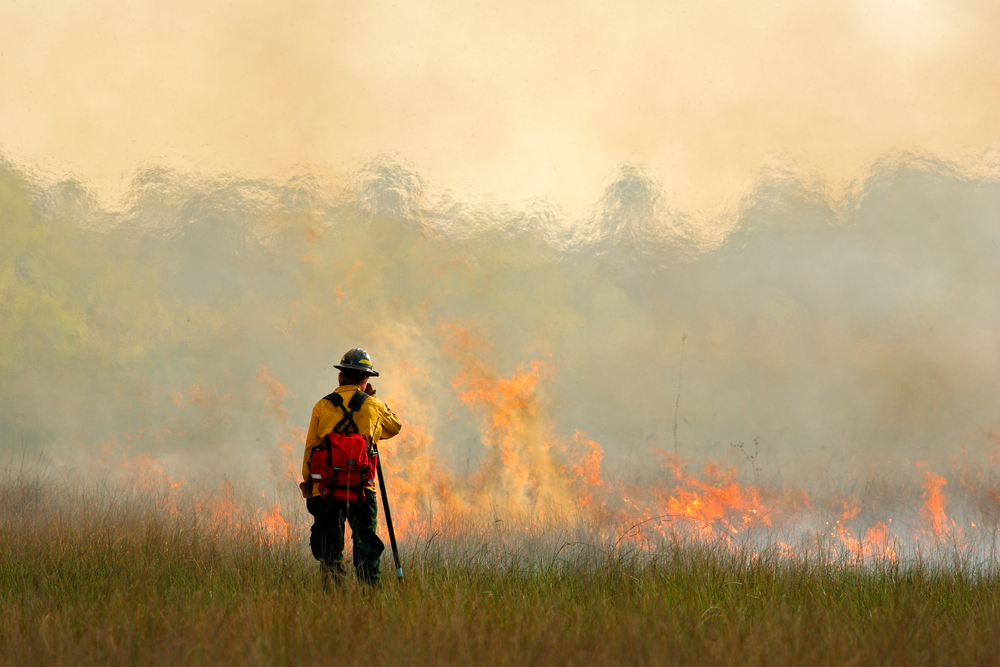This has been an extraordinarily active season for natural disasters. In fact, the National Hurricane Center (NHC) has already run out of names for 2020 storms. Meaning that – for just the second time since the NHC started naming storms in 1953 – they will have to revert to Greek letters for hurricanes and tropical storms. The last time was in 2005, which was the year in which Hurricane Katrina struck New Orleans, causing more than 1,800 deaths and $125 billion in damage.
As if a hurricane season so active that – in about a month and a half – we’ve exhausted the list of 21 names the NHC put aside for the entire year wasn’t enough, this has also been an incredibly active year for an increasingly prevalent natural disaster – wildfires.
The year started with 46 million acres burning in Sydney, Australia. Those deadly bushfires destroyed more than 5,900 buildings and killed at least 34 people. It was a horrific tragedy that caused incredible damage to not just Australia’s people, but to many incredibly important natural habitats. Those brushfires reportedly killed or displaced upwards of three billion animals, leading the World Wide Fund for Nature to call it, “…one of the worst wildlife disasters in modern history.”
Now, we’re seeing a similar situation play out in America’s west coast. There are currently 59 uncontained fires burning across the states of California, Oregon, and Washington. According to the National Interagency Fire Center (NIFC) in reporting by CNN, these fires have, “…burned more than 5.8 million acres,” and have killed, “….at least 34 people.”
As with all hurricanes and wildfires in the past, eventually, the storm passes and the fire is contained. In those moments, the best of humanity is on display as people band together to help rebuild and recover from these costly and terrible disasters.
Unfortunately, they’re often forced to do so without a vital resource – communications.
Destroying infrastructure as well as buildings
When people see aftermath photos of a natural disaster they’re often thinking about the damage to things like homes, office buildings, and small businesses. And while they may also see a washed-out road or a fallen bridge, transportation infrastructure isn’t the only one that is damaged and destroyed.
Natural disasters like hurricanes and wildfires also often compromise important electrical infrastructure and critical communications infrastructure. As Cale Teeter Gregg recently wrote on The Last Mile:
Many people don’t realize that the critical communications infrastructure that transmits the signals that keep their cell phones and other devices connected are often destroyed in natural disaster situations. The electronics at the base of these towers are often compromised in flooding. Wildfires will burn through the cables that connect them to terrestrial networks. Hurricanes will blow down cabling and damage electronics making them inoperable. Even lightning strikes can impact a cell tower and knock out service.
When these systems are knocked out and denied, the emergency response crews and impacted civilians in the affected area are left without the ability to communicate. This can make calling for help or assistance difficult to impossible. This can make coordination of relief and recovery efforts difficult. This can also have a major emotional toll as families are left unable to tell loved ones they’re okay, or to check in to ensure that they’re safe and secure.
And this is where satellites can help.
Quickly deployed, high bandwidth connectivity
In the wake of large natural disasters, such as highly damaging hurricanes and wildfires, it can take months to restore basic services. For example, following Hurricane Maria, it was estimated to take up to nine months to get power restored to 100 percent of the people serviced by the public utility company, PREPA.
During this time – while critical infrastructure is being repaired – there are still recovery teams and civilians that require access to stable communication networks. And satellite can help to deliver them.
Portable satellite terminals that deploy quickly can be brought into affected areas to help take the place of – or complement – damaged terrestrial networks. Since the connectivity comes from space and the hardware is mobile and deployed following the crisis or natural disaster, satellite is always available – regardless of what damage was done to terrestrial networks and infrastructure.
And, thanks in large part to the new generation of high throughput satellites (HTS) and the emergence of HTS satellites at Medium Earth Orbit (MEO), the connectivity that is delivered via satellite is both high bandwidth and dependable.

HTS delivers drastically increased throughputs, better link optimization, and performance. HTS also combines frequency reuse with blanket juxtaposition of high-power spot beams over a geographic area. This allows the user to transmit and receive more data than a standard wide beam. HTS satellites at MEO combine this increased throughput and dependability with lower latency – effectively delivering a fiber-like connection from space.
The recovery teams and civilians in areas impacted by natural disasters need critical connectivity tools for collaboration, coordination, and communication among themselves and their loved ones. While the terrestrial infrastructure that traditionally delivers this connectivity may be disrupted, satellites can fill that requirement without any loss of quality or capability.
Natural disasters are terrible tragedies, but they also bring out the best in people. Those that rush in to help following disasters should be given the tools they need to do their jobs effectively and ensure their own safety. Today’s next generation of HTS satellites can give them the tools they need to help communities recover while keeping themselves safe and connected.
